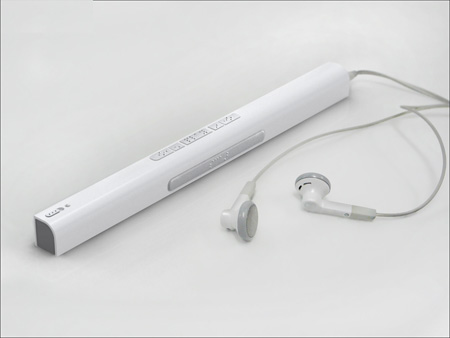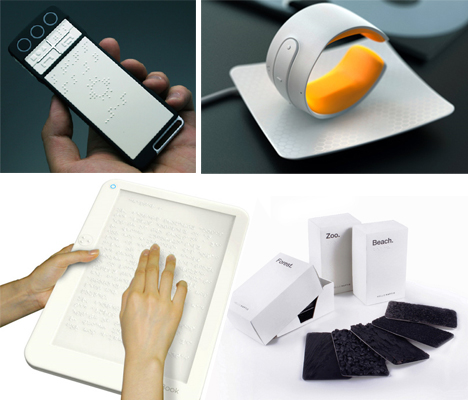A Guide to Life-Changing Assistive Technology for the Blind and Visually Impaired
The improvement of assistive modern technology has introduced a transformative era for individuals who are blind or visually impaired, offering tools that boost freedom and improve everyday experiences. Technologies such as clever navigation gadgets and AI-driven applications are redefining just how users interact with their surroundings, while available analysis options and wise home innovations promise to more boost the top quality of life. As these modern technologies proceed to progress, one need to think about not only their functionalities but additionally their influence on cultivating independence and inclusivity. What does this mean for the future of accessibility?
Smart Navigation Devices
Smart navigation tools are revolutionizing the means individuals who are blind or visually damaged communicate with their atmosphere. These innovative modern technologies, which incorporate GPS, audio feedback, and haptic signals, offer individuals with essential information regarding their environments, boosting their independence and movement.
One noticeable instance is using clever walking canes equipped with sensors that find barriers and provide real-time responses via resonances or audio signs. These tools allow individuals to navigate complicated atmospheres, such as busy roads or crowded public rooms, with enhanced self-confidence. In addition, wearable tools, such as clever glasses, are being created to aid in identifying faces, reviewing text, and recognizing objects, further augmenting the customer's spatial recognition.
In addition, clever navigation devices are significantly including expert system to assess information and adapt to customers' preferences. This tailored strategy not only improves navigating effectiveness but also promotes a sense of empowerment amongst users. As modern technology remains to breakthrough, the possibility for smart navigating devices to develop an extra obtainable and comprehensive globe for individuals who are aesthetically damaged or blind stays encouraging, ultimately reshaping their day-to-day experiences and communications.
Cutting-edge Mobile Apps
Mobile applications are becoming powerful devices for helping people that are blind or aesthetically damaged, providing a variety of functionalities that improve daily living. These apps harness advanced technology to facilitate day-to-day tasks, enhance access, and advertise self-reliance.
One group of ingenious mobile apps concentrates on visual recognition. Applications like Be My Eyes connect customers with sighted volunteers using video phone calls, making it possible for real-time assistance for jobs such as reading tags or browsing strange atmospheres. In a similar way, apps like Seeing AI use expert system to explain environments, reviewed text, and determine objects, offering customers with important details at their fingertips.
An additional significant area is navigation and orientation. Apps such as Aira and Neighboring Traveler give audio guidance, aiding customers browse urban areas effortlessly. They offer customized aid, permitting for an extra certain expedition of the atmosphere.
Moreover, health and health applications accommodate particular demands, such as medicine management and fitness tracking. These applications aim to foster an alternative method to well-being, ensuring that users can maintain their health independently.
Wearable Assistive Devices
Wearable assistive tools stand for a considerable development in technology designed to sustain people who are blind or visually damaged. These gadgets enhance flexibility and independence by giving real-time feedback about the surrounding environment. Amongst the most noteworthy wearable technologies are clever glasses geared up with cameras and sensing units, which can determine obstacles and relay critical info via sound cues.

An additional cutting-edge choice includes wrist-worn devices that make use of ultrasonic waves to find barriers and provide why not try these out navigational support. These gadgets typically include personalized settings, allowing customers to customize the notifies to their specific needs.
The assimilation of fabricated knowledge in wearable assistive technology is also significant, as it continuously improves the precision and responsiveness of these gadgets. Overall, wearable helpful resources assistive devices are changing the lives of the visually damaged and blind, promoting better autonomy and boosting high quality of life via innovative solutions.
Accessible Reading Solutions
Accessible reading services play a critical function in making it possible for individuals that are aesthetically impaired or blind to involve with message across different formats. These options incorporate a variety of tools and modern technologies developed to boost analysis experiences, from standard print materials to digital material.
One prominent remedy is Optical Character Recognition (OPTICAL CHARACTER RECOGNITION) innovation, which transforms printed message into electronic format, enabling users to listen to or check out the content using screen viewers. In addition, specialized e-readers outfitted with text-to-speech abilities use adjustable analysis experiences, enabling customers to adjust font sizes and history colors for boosted exposure.
One more effective method is braille display screens, which offer tactile responses by transforming digital text right into braille. This allows people to go through touch, cultivating better freedom and accessibility to literary works. Mobile applications designed for reading checked publications or files can empower users with instant accessibility to a substantial collection of materials (Mobility aids for visually impaired users).

Smart Home Technologies
Smart home technologies have transformed the method people that are blind or aesthetically damaged interact with their living environments, improving both self-reliance and safety. These innovative solutions leverage automation and connectivity to create an available space tailored to the requirements of individuals.
Smart speakers and voice-activated assistants offer hands-free control over different gadgets, enabling customers to readjust safety, temperature, and lighting measures via straightforward voice commands. This capability lessens reliance on sighted support and fosters a feeling of freedom. Furthermore, smart lighting systems can be customized to deliver acoustic comments page or tactile cues, making it possible for people to navigate their homes more properly.
Moreover, protection systems outfitted with clever cams and sensors can send real-time alerts to customers, improving personal safety without demanding visual verification. Automated door locks use assurance, enabling users to safeguard their homes easily.
Incorporating clever home technologies not just improves everyday living but likewise encourages social interaction through linked gadgets - Mobility aids for visually impaired users. With recurring improvements in assistive modern technology, the future shows up appealing, as even more options will arise to additional equip individuals that are aesthetically impaired or blind, ensuring an extra inclusive and independent lifestyle
Final Thought
In final thought, the improvements in assistive modern technology for the aesthetically impaired and blind represent a considerable leap toward enhancing independence and top quality of life. Smart navigating devices, ingenious mobile applications, wearable gadgets, accessible analysis remedies, and clever home technologies collectively promote a comprehensive setting. This assimilation of innovation not only improves flexibility and day-to-day living yet additionally empowers individuals to engage totally with their environments, promoting higher autonomy and engagement in culture.
Developments such as smart navigating gadgets and AI-driven applications are redefining exactly how users connect with their environments, while available analysis remedies and wise home technologies assure to additional elevate the top quality of life. As innovation continues to advance, the possibility for wise navigating devices to create an extra available and comprehensive world for people who are blind or visually impaired remains appealing, inevitably improving their everyday experiences and communications.
Wearable assistive gadgets stand for a significant innovation in modern technology designed to sustain individuals that are visually damaged or blind. Among the most notable wearable technologies are clever glasses furnished with sensing units and electronic cameras, which can identify barriers and relay essential info through sound hints.
Smart navigation tools, cutting-edge mobile applications, wearable devices, available reading solutions, and clever home technologies collectively promote a comprehensive setting.